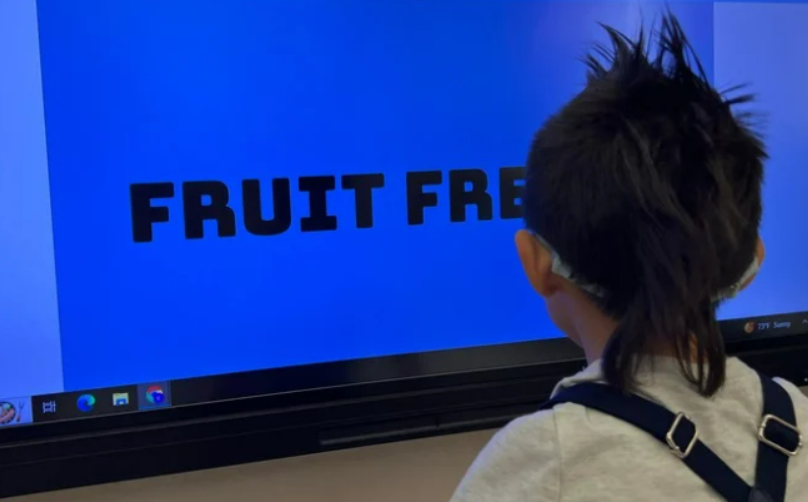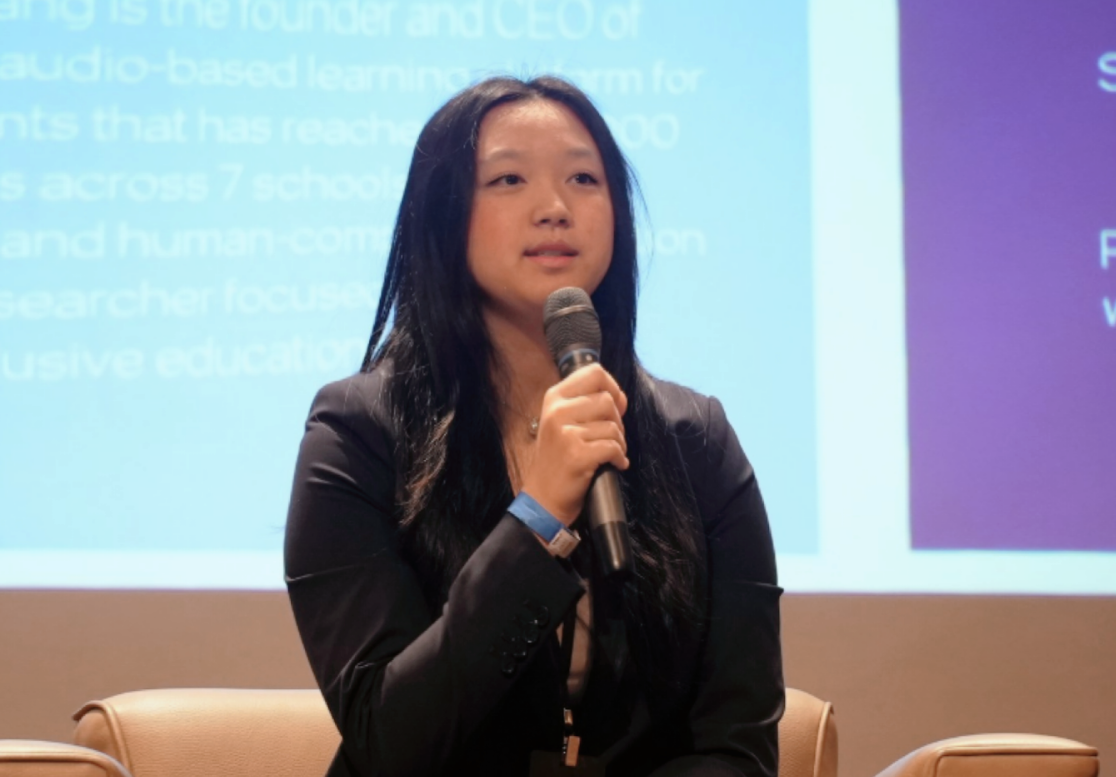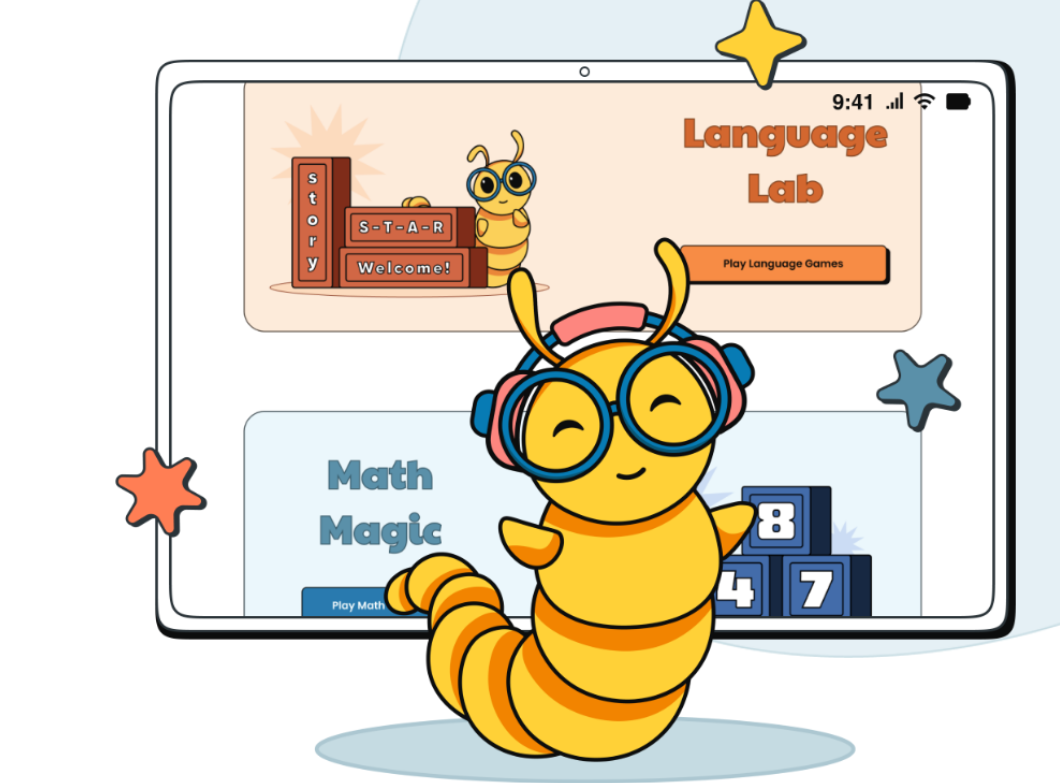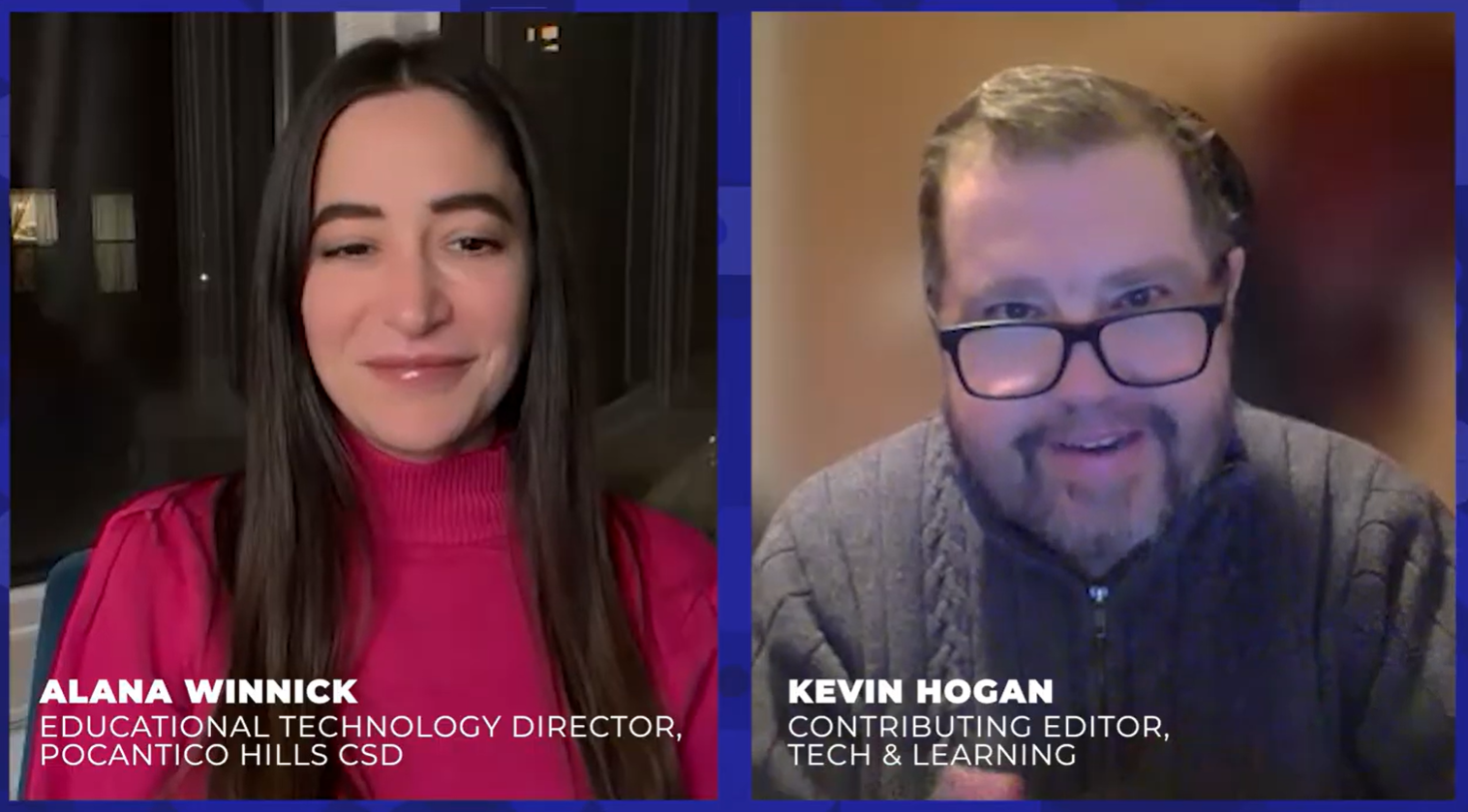Using AI and Tech For Accessibility: 5 Tips For Educators and Students
Crystal Yang created an educational app that has been used by more than 7,000 blind students, and she hasn’t even started college yet. She shares tips for ways others can harness the power of AI and technology.

AI can provide many new opportunities for accessible education, Crystal Yang says.
The recent high school graduate is about to start her first year at The Wharton School of the University of Pennsylvania and knows this firsthand. While a high school student, Yang was friends with a blind classmate and realized that the student didn’t have the same educational opportunities that Yang did.
“I grew up playing cool math games, like Khan Academy and PBS Kids Games. And these are all educational games that are all very visual, and there wasn't really a tool like that for blind students,” Yang says.
She decided to fix that, and launched Audemy, a nonprofit educational gaming platform designed for the visually impaired. So far, Audemy has partnered with 26 schools for the blind, and the platform has been used by more than 10,000 blind students.
Along the way, Yang has learned several best practices that she thinks can help others--including high school and college students--launch AI-powered apps that make a difference. Here are her tips for starting a tech nonprofit or company.

1. Embrace AI
“For the general public, there's this huge fear of AI right now,” Yang says. “But I think it's really necessary to embrace it. It is the future.”
She advises those interested in tech entrepreneurship “to shift your perspective and see how it can be used to help society, increase efficiency, and make things more accessible,” she says.
Tools and ideas to transform education. Sign up below.
2. Use AI To Get Started With Code
Learning to code without any experience can be really intimidating, but the process is getting easier and easier.
“A lot of AI tools are able to code pretty well right now, and there are a lot of resources online that teach how to code,” Yang says. “I think someone without any coding skills can make an interactive website or create a small app. When it comes to editing the code, that gets a little harder, but overall, I think people would be surprised at how much AI can do right now.”

3. Don’t Be Afraid To Ask For Help From Experienced Volunteers
People across the globe are passionate about using technology to help solve problems, and Yang was able to use the website VolunteerMatch to get volunteers to help launch and run her nonprofit. She now has a team of 60 professional developers and designers from all over the world, a response that has surprised her.
“I remember when I put out my first volunteer request for a software engineer, I was like, ‘There's no way I'll have professional people offering to build software,’” Yang recalls. “But I just put out the request anyway. And the next day, I had 15 people from all across the world with different skill levels who were interested in helping me out.”
This response has really inspired her. “I was so excited to see that people wanted to use technology to make an impact in the world,” Yang says.
4. Seek Out Grants
Many grants are available for nonprofits, particularly in the technology space. Yang says those looking to build new organizations should look for these.
Audemy was one of Intel’s AI Global Impact Festival award winners in 2024, and has received grants from Google in the form of Google ads that have helped the platform grow.
“People are willing to help nonprofits, not only via volunteers, but also financially as well,” Yang says.
5. Harness Tech For Accessibility
For those looking to work in the accessibility space in particular, Yang sees lots of opportunities. “I think accessibility is a really under-addressed theme when it comes to development,” she says.
Yang advises other students interested in working in the world of accessibility to connect with people from various communities and see what their needs are that are not being addressed.
“Use your creativity to build tools to address their specific issues,” Yang says. “There are infinite possibilities when it comes to technology.”
Erik Ofgang is a Tech & Learning contributor. A journalist, author and educator, his work has appeared in The New York Times, the Washington Post, the Smithsonian, The Atlantic, and Associated Press. He currently teaches at Western Connecticut State University’s MFA program. While a staff writer at Connecticut Magazine he won a Society of Professional Journalism Award for his education reporting. He is interested in how humans learn and how technology can make that more effective.

